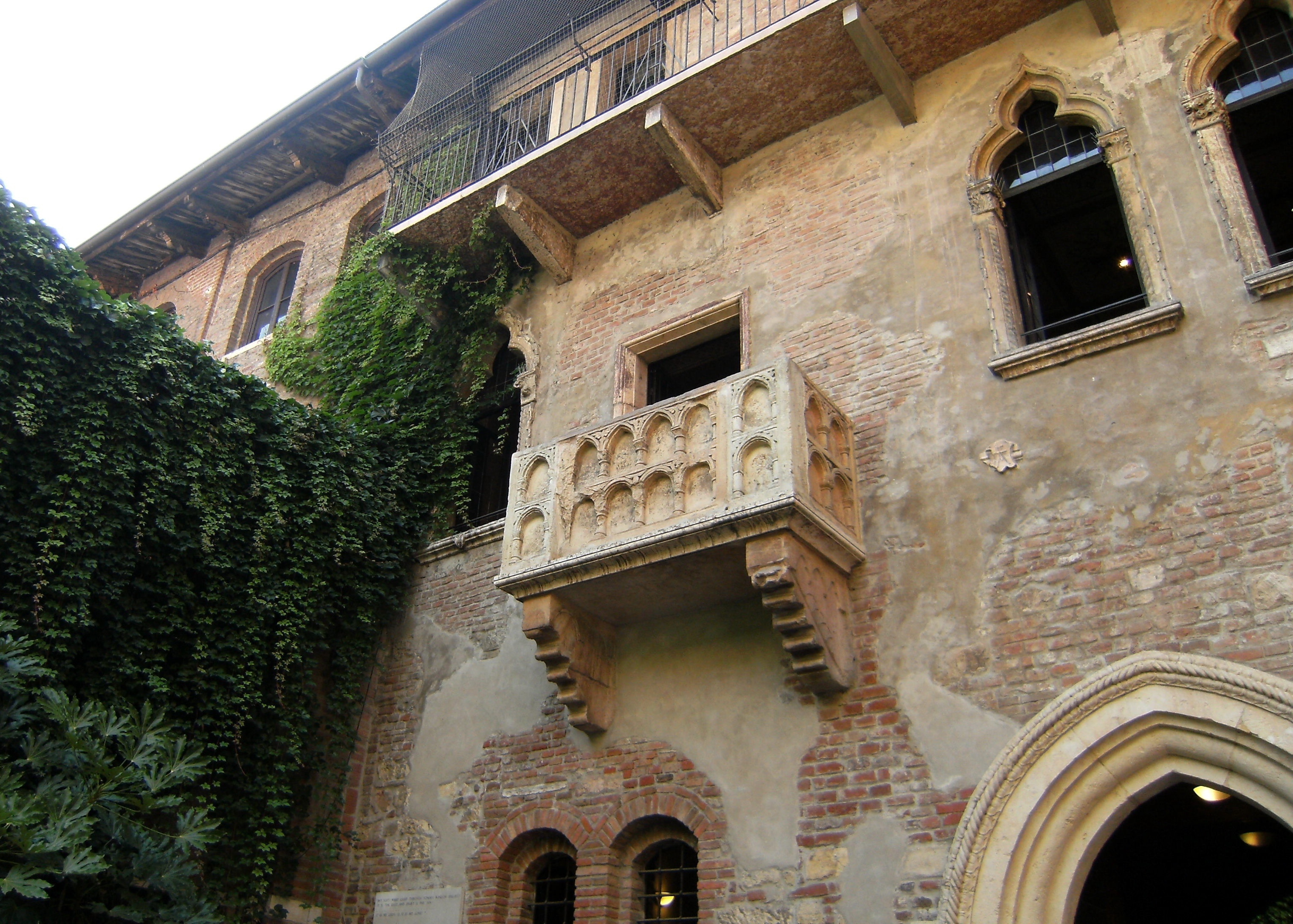
Verona is the city of love, and to pay tribute to William Shakespeare, the author that made it famous around the world, you must visit the places of the ultimate romantic tragedy: Romeo and Juliet.
Undoubtedly the first destination is the house of Juliet, visited by thousands of tourists every year. This is the Stallo del Cappello, an old tower house dating back to c.1200-1300. According to tradition this was the house of the Capulet Family, the family of Shakespeare's heroine. Damaged over the centuries, the house and the picturesque courtyard have been restored with a clever use of architectural and decorative elements inspired from the Medieval Age.
Today the house holds a collection of antique engravings - the subject of which is the story of two lovers - and furniture and costumes used in the film version by Franco Zeffirelli. In the courtyard you can admire the magnificent bronze statue of Juliet by Nereo Costantini that became the symbol of Verona.
After Juliet's house you should visit her beloved's home, located in a secluded alley in Verona's historic center, not far from the Scaliger Tombs. This rustic brick castle - said to have been that of Romeo - belonged to the Montecchi family; it features the typical Ghibelline swallowtail battlements. Currently the building is privately owned, but can still be seen from the outside. This characteristic architecture is testament to the struggles between the Guelphs and Ghibellines, and the need for the inhabitants of the city center to build towers and private fortifications in their defense. These defenses were reinforcements to the already-existing barriers of the River Adige and the walls surrounding Verona.
Our tour of the legendary sites as narrated by Shakespeare will end at the famous Scaliger Tombs, a masterpiece of the Italian Gothic. On top of this mausoleum to Verona's storied nobility from the Middle Ages are these same figures riding: Cangrande, Mastino II and Cansignorio.
The second part of our tour follows the Medieval walls that surround the city of Verona, begun during the Middle Ages under the bloody tyranny of Ezzelino Romano. Along the walls you can see the gates of Bra, the city's main entrance at the time that our star-crossed lovers would have lived. Alongside these ancient gates is a bronze bust of William Shakespeare, and a plaque citing Romeo's famous pre-exile speech.
The last stop of this romantic tour in the city of Romeo and Juliet is the fairer lover's tomb, identified as being inside the Monastery of San Francesco in Corso. It was the only monastery outside the city walls during the time frame of the tale, and the only one accessible to the exiled Romeo. The Monastery was built in 1230 on the site where, according to tradition, St. Francis of Assisi dwelt. Here the tragic denouement of the lovers took place, and here, in a dark room of the crypt, among the tombstones of monks lies an empty red marble sarcophagus, known as the tomb of Juliet.
But Verona is not only the city of the Bard's tragic love story; it is also a beautiful city full of monuments to be seen, beginning with the picturesque Piazza delle Erbe. Dear to poets and painters, and inhabited at its center by the imposing fountain of Madonna Verona, it is also the site of the lavish and Baroque Palazzo Maffei. From here, across the pedestrian shopping street of Via Mazzini is the celebrated Arena. This elegant area, called the Listone, is ideal for a stroll. On our right, at the end of Via Borsari stands the Borsari Gate. Leaving the Roman amphitheatre behind us, we travel along Via Roma until reaching Castelvecchio, the manor home of the Scaliger Family, Lords of Verona. Then, moving towards Corso Cavour, before making our way to Porta Palio, we approach San Zeno (on the right) and see one of the greatest glories of Roman architecture: the Basilica of San Zeno. To enjoy a unique view of this city, walk the Pietra sull'Adige Bridge (i.e. the "Stone on the Adige"), the only Roman bridge still intact today!



